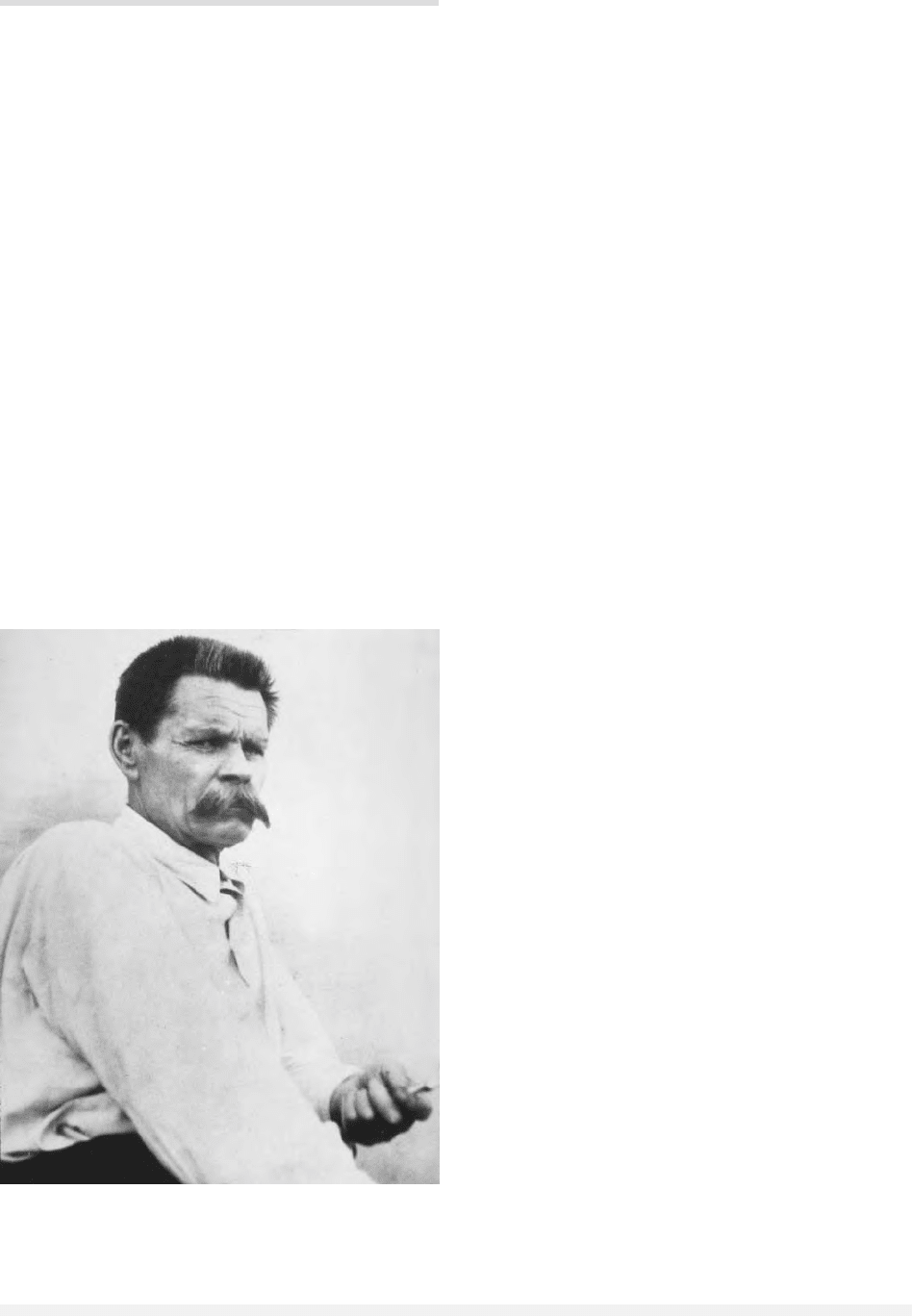Encyclopedia of Russian History
Подождите немного. Документ загружается.


Brown, Archie, and Shevtsova, Lilia, eds. (2001). Gor-
bachev, Yeltsin, and Putin: Political Leadership in
Russia’s Transition. Washington, DC: Carnegie En-
dowment for International Peace.
Chernyaev, Anatoly. (2000). My Six Years with Gorbachev.
University Park: Pennsylvania State University
Press.
Gorbachev, Mikhail. (1996). Memoirs. New York: Dou-
bleday.
Gorbachev, Mikhail, and Mlynár
, Zdene
k. (2001). Con-
versations with Gorbachev. New York: Columbia Uni-
versity Press.
Hough, Jerry F. (1997). Democratization and Revolution
in the USSR, 1985–1991. Washington, DC: Brook-
ings Institution Press.
Ligachev, Yegor. (1993). Inside Gorbachev’s Kremlin. New
York: Pantheon Books.
McFaul, Michael. (2001). Russia’s Unfinished Revolution:
Political Change from Gorbachev to Putin. Ithaca, NY:
Cornell University Press.
Matlock, Jack F., Jr. (1995). Autopsy of an Empire: The
American Ambassador’s Account of the Collapse of the
Soviet Union. New York: Random House.
Palazchenko, Pavel. (1997). My Years with Gorbachev and
Shevardnadze: The Memoir of a Soviet Interpreter. Uni-
versity Park: Pennsylvania State University Press.
A
RCHIE
B
ROWN
GORBACHEV, RAISA MAXIMOVNA
(1932–1999), “first lady” of the Soviet Union,
spouse of Mikhail Gorbachev.
Raisa Maximovna Titarenko was born on Jan-
uary 5, 1932, in Siberia and died at the age of 67
on September 21, 1999. She married Mikhail Gor-
bachev, a fellow student at Moscow State Univer-
sity in 1953 and achieved fame as the first spouse
of a Soviet leader to accompany him on all his trav-
els. This made a substantial contribution to the fa-
vorable impact the Gorbachevs had on their many
foreign interlocutors.
Raisa Gorbachev became one of the best-known
women in the world, partly because her attractive
appearance, vivacity, and self-assurance were so
much at odds with the image the wives of high-
ranking Soviet politicians had projected hitherto.
Her partnership with her husband was exception-
ally close. It caused a sensation when Gorbachev
revealed, in answer to a question from an Ameri-
can television interviewer, that he discussed every-
thing with his wife, including high-level politics
and the affairs of state.
Raisa, as she became universally known, was
intellectually well equipped for the role she played.
Though she had to attend many different schools
as her father, a railway worker, moved from place
to place, she gained a gold medal for maximum
grades in all subjects and entered the philosophy
department at Moscow State University in 1949.
Later she did pioneering sociological research,
gained the Russian equivalent of a Ph.D., and pub-
lished a book in 1969 on the way of life of the peas-
antry in the Stavropol region (where her husband
was the First Secretary of the Communist Party).
Whereas many Soviet officials had books produced
for them by hired hands, Raisa Gorbachev did her
own field research and writing.
As a very visible “First Lady” in the Soviet
Union between 1985 and 1991, she aroused envy
and resentment at home (for her glamour and
smart clothes) as well as admiration, but she was
much more universally liked and respected abroad.
She played a significant part in projecting both the
new image and new reality of Soviet politics fol-
lowing the accession of her husband to the high-
est post in the Kremlin.
See also: GORBACHEV, MIKHAIL SERGEYEVICH
BIBLIOGRAPHY
Brown, Archie. (1996). The Gorbachev Factor. Oxford: Ox-
ford University Press.
Gorbachev, Mikhail. (1996). Memoirs. London: Trans-
world.
Gorbachev, Raisa. (1991). I Hope: Reminiscences and Re-
flections. New York: HarperCollins.
A
RCHIE
B
ROWN
GORCHAKOV, ALEXANDER
MIKHAILOVICH
(1798–1883), Chancellor and Foreign Minister of
the Russian Empire, 1856–1881.
A descendant of an illustrious Russian aristo-
cratic family, Alexander Gorchakov was educated
at the lyceum in Tsarskoye Selo that is best known
for his classmate, Alexander Pushkin. He excelled
as a classical scholar and gained more than the
usual fluency in Latin and French. He chose a
GORCHAKOV, ALEXANDER MIKHAILOVICH
583
ENCYCLOPEDIA OF RUSSIAN HISTORY

diplomatic career, entering the foreign ministry un-
der the tutelage of Count Karl Nesselrode, serving
as minister to Stuttgart and Württemberg during
the 1830s and 1840s and to the German Confed-
eration, where he first met Otto von Bismarck. His
promotion to Austrian ambassador during the
Crimean War was a more serious test of his diplo-
matic ability and won his recognition as a worthy
successor to Nesselrode. He was, nevertheless, a
sharp critic, not only of the blunders that led to
the war, but also of the peace terms that resulted.
He consistently counseled caution on Russian in-
volvement in the Balkans, a policy unheeded by his
predecessors and successors, to Russia’s and the
world’s misfortune.
As a true Russian following a German master,
he rose to the occasion of the Russian defeat in the
Crimean War to be Foreign Minister and Chancel-
lor under Tsar Alexander II. In a period of vulner-
ability and weakness during the reforms of the tsar,
he maintained a conservative-cautious front in Eu-
ropean diplomacy, while gradually managing to
nullify most of the ignominious restrictions of the
Treaty of Paris (1856), such as the restrictions on
warships in the Black Sea. His major subsequent
accomplishments were to shield successfully the
substantial Russian expansion in Central Asia
(Turkistan) and the Far East (the acquisition of the
Maritime Provinces) from European interference
and to dispose of a costly and vulnerable territory
in North America (Alaska) to the United States
in 1867. His greatest accomplishment was the
achievement of a dominant position for Russia in
the Balkans through the treaty negotiations at San
Stefano that concluded the Russo-Turkish War of
1877–1878 and at the Congress of Berlin that fol-
lowed. His over-commitment to pan-Slavic and na-
tionalist Russian goals, however, moved Russia into
the center of Great Power rivalries in the late nine-
teenth and early twentieth centuries, sowing the
seeds for the debacle of World War I.
Much of Gorchakov’s success in advancing
Russia’s European interests, however, could also
be credited to Bismarck, who promoted German-
Russian collaboration, supported Gorchakov’s ini-
tiatives, and whose paramount role in European
diplomacy overshadowed Gorchakov’s. In response,
Gorchakov willingly supported German aggression
in Holstein and in the Franco-Prussian War, thus
promoting Bismarck’s creation of the German Em-
pire. They were partners in both waging limited
wars for expansionist gains and in preserving gen-
eral peace through aggressive diplomacy, but the
Russian chancellor clearly resented the appearance
of a German domination of Russian policy. While
Bismarck suffered dismissal by his own govern-
ment in 1879, Gorchakov overstayed his tenure,
becoming a senile embarrassment by 1881. Un-
fortunately for both major European powers, none
would follow with equal skill, international out-
look, prestige, and ability to compromise and
maintain peace. It is perhaps no surprise that Vla-
dimir Putin’s “new Russia” recognizes Gorchakov
as a statesman who successfully promoted Russ-
ian interests in international relations and, in his
honor, awarded the annual “Gorchakov peace
prize,” in 2002 to United Nations Secretary Gen-
eral Kofi Annan.
See also: ALEXANDER II; NESSELRODE, KARL ROBERT;
PUSHKIN, ALEXANDER SERGEYEVICH
BIBLIOGRAPHY
Jelavich, Barbara.(1964). A Century of Russian Foreign Pol-
icy, 1814–1914. Philadelphia: Lippincott.
Kennan, George F.(1979). The Decline of Bismarck’s Euro-
pean Order: Franco-Russian Relations, 1875–1890.
Princeton, NJ: Princeton University Press.
N
ORMAN
E. S
AUL
GORDON, PATRICK LEOPOLD
(1635–1699), born in Cronden, Aberdeen, Scotland,
died in Moscow.
Patrick Leopold Gordon, known in Russia as
Petr Ivanovich Gordon, was a descendant of a Scot-
tish Catholic aristocratic family and studied at
Braunberg College in Danzig (Gdan´sk) where he
graduated in 1655. Gordon served in the Swedish
and Polish armies, and then entered Russian service
in 1661 with the rank of major, given the task of
training New Formation regiments. Gordon was
dispatched as an unofficial Russian envoy to Eng-
land in 1666–1667 where he met with James II and
played an important role in reviving Anglo-Russ-
ian relations, including trade which had been of
marginal significance since the expulsion of the
English from the Russian interior in 1649. He ad-
vised the English government and the Muscovy
Company on strategies to adopt for negotiations
with Russia. He also was an active participant in
the Chyhyryn (Chigirin) campaign in 1677–1678
GORDON, PATRICK LEOPOLD
584
ENCYCLOPEDIA OF RUSSIAN HISTORY

and the Crimean expeditions of 1687 and 1689.
Gordon headed the Butyrskii Regiment, was pro-
moted to general-major in 1678, and general-lieu-
tenant in 1683.
Having supported the regime of Sof’ia Alek-
seevna, in 1689 he switched sides back to Peter I
(the Great) who deposed his half-sister. Gordon be-
came one of Peter’s close associates and played a
crucial role in the creation of a regular Russian
army. He headed the Kozhukhov campaign of 1694
and obtained Peter’s permission for the presence in
Russia of a Roman Catholic clergy, and in 1694
founded a Catholic church in Moscow. Gordon was
a leader of the Azov campaigns of 1695–1696, and
was in charge of the seizure of the fortress in 1696.
Gordon subdued the Strel’tsy (Musketeer) Uprising
of 1698. He authored an extensive diary describing
his experiences in Sweden, Poland, and Russia,
1655–1699, and also produced a large number of
surviving letters pertaining to Anglo-Russian po-
litical and commercial relations, and late Muscovite
political history.
See also: PETER I
BIBLIOGRAPHY
Gordon, Patrick.(1859). Passages from the Diary of Gen-
eral Patrick Gordon of Auchleuchries,
AD
. 1635-
AD
.
1699. Aberdeen: Printed for the Spalding Club.
Konovalov, Sergei. (1963). “England and Russia: Two
Missions, 1666–8,” Oxford Slavonic Papers 10:47–58.
Konovalov, Sergei. (1964). “Patrick Gordon’s Dispatches
from Russia, 1667.” Oxford Slavonic Papers 11:8–16.
Konovalov, Sergei. (1967). “Sixteen Further Letters of
Patrick Gordon,” Oxford Slavonic Papers 13:72–95.
Poe, Marshall T. (2000). “A People Born to Slavery: Rus-
sia.” In Early Modern European Ethnography, 1476—
1748. Ithaca, NY: Cornell University Press.
J
ARMO
T. K
OTILAINE
GOREMYKIN, IVAN LONGINOVICH
(1839–1917), minister of interior and twice prime
minister under Nicholas II.
Ivan Loginovich Goremykin was the prototyp-
ical bureaucrat and conservative leader of late
tsarist times, and became, especially during World
War I, a symbol of the old regime’s outdatedness
and resistance to change.
Born of a noble family, Goremykin spent his
long life almost entirely in public service. During
the 1860s, while an official in Russian Poland, he
took a special interest in peasant affairs, and later
he was involved in many studies of rural issues.
Characteristic of his record, however, he never pro-
posed any solutions. After various posts in the Sen-
ate, the Ministry of Justice, and the Ministry of
Interior, Goremykin was appointed minister of In-
terior in October 1895 by the new tsar, Nicholas
II, who valued him as a “safe” bureaucrat and a
staunch supporter of the autocracy. Goremykin as-
sured Nicholas that Russian society was basically
stable and only some “completion and repair” was
required to fix minor problems. Goremykin pro-
posed extending the zemstvo system into the em-
pire’s western provinces plus a few borderlands,
but Nicholas, fearing the spread of liberal ideas, de-
cided in October 1899 to replace Goremykin.
After the tsar became disillusioned with Sergei
Witte’s reform efforts in 1905 and 1906, he fired
Witte as prime minister in April 1906 and brought
in Goremykin, then sixty-seven years old. Gore-
mykin discarded the program Witte had intended
to submit to the First Duma and stonewalled the
Duma’s demands. Having decided to dismiss the
Duma and seeking a stronger leader, the tsar sent
Goremykin into retirement in July 1906, replacing
him with Peter Stolypin.
But in January 1914 Goremykin, at the age of
seventy-four, again became prime minister. Be-
cause of his frailty and lack of initiative and be-
cause he rebuffed public attempts to improve the
government’s war effort, Goremykin came to sym-
bolize the regime’s incompetence and callousness.
Despite public pressure, Nicholas II stuck by his de-
crepit prime minister until January 1916, when
Goremykin was finally replaced.
See also: NICHOLAS II; STOLYPIN, PETER AKRADIEVICH;
WITTE, SERGEI YULIEVICH
BIBLIOGRAPHY
Hosking, Geoffrey. (1973). The Russian Constitutional Ex-
periment: Government and Duma, 1907–1914. Cam-
bridge, UK: Cambridge University Press.
Kokovtsov, V. N. (1935). Out of My Past. Stanford, CA:
Stanford University Press.
Lincoln, W. Bruce. (1986). Passage through Armageddon:
The Russians in War and Revolution, 1914–1918. New
York: Simon and Schuster.
J
OHN
M. T
HOMPSON
GOREMYKIN, IVAN LONGINOVICH
585
ENCYCLOPEDIA OF RUSSIAN HISTORY

GORKY, MAXIM
(1868–1936), renowned writer and playwright.
Maxim Gorky (Maxim the Bitter) was born
Alexei Maximovich Peshkov in Nizhny Novgorod
during the reign of Tsar Alexander II and died in
the Stalinist Soviet Union. Gorky was orphaned at
an early age, and his formal education ended when
he was ten because his impoverished grandparents
could not support him. He was self-taught in many
areas, including literature, philosophy, and history,
both Russian and Western.
Gorky rose to prominence early in life and
made his mark as a writer, playwright, publicist,
and publisher in Russia and abroad. His literary ca-
reer began in 1892 with the publication of the story
“Makar Chudra.” His articles and stories were soon
appearing in provincial newspapers and journals.
His ideas of the writer’s involvement in the social,
political, and economic problems facing Russia were
close to those of Leo Tolstoy and Vladimir G. Ko-
rolenko, who became his mentor and friend. Some
of his literary works had important political sig-
nificance, such as the poem Burevestnik (The Stormy
Petrel), which in 1901 prophesied the oncoming
storm of revolution. While visiting the United
States in 1906 on a mission to win friends for the
revolution and raise funds for the Russian Social
Democratic Workers’ Party (RSDWP), he wrote the
novel Mat (Mother). Gorky’s revolutionary ideol-
ogy lay in his insistence on the inevitability of rad-
ical change in Russian society.
Disillusioned with the passivity and ignorance
of the peasant, Gorky gradually abandoned narod-
nik (populist) ideology in favor of social democracy.
He financed Vladimir Lenin’s Iskra (The Spark). At
the same time he supported other parties, such as
the Socialist Revolutionaries and the Liberals.
The events of Bloody Sunday and the Revolu-
tion of 1905 induced Gorky to become involved,
for the only time in his life, in revolutionary work.
He wrote articles for the first legal Bolshevik news-
paper, Novaia zhizn (New Life), gave financial as-
sistance, and criticized the tsar’s October Manifesto
for its conservatism. Warned of his imminent ar-
rest, Gorky left Russia for the Italian island of Capri
and did not return until 1913. Alienated by the
Lenin and the RSDWP, Gorky joined a group led by
Alexander A. Bogdanov, who shared his belief in
mass education. With Bogdanov and Anatoly V.
Lunacharsky, he organized a school for under-
ground party workers. This was also the time of
the emergence of a new religion called Bogostroitel-
stvo (God-building), best defined as a theory of the
divinity of the masses. Gorky’s Ispoved (Confession),
written in 1908, served as an exposition of this be-
lief and led to a break with Lenin.
On his return to Russia in 1913, Gorky devoted
his time, ability, and resources to advancing Russian
education and culture, projects brought to an end
by World War I and the revolutions of 1917. Gorky
was enthusiastic about the February Revolution,
hoping that Russia would become a liberal democ-
ratic state. Soon after Lenin’s return to Russia in
April 1917, Gorky, writing in Novaia zhizn (New
Life), criticized the Bolshevik propaganda for a so-
cialist revolution. These views appeared in articles
called Nesvoevremennye mysli (Untimely Thoughts).
Russia, wrote Gorky, was not ready for the social-
ist revolution envisioned by the Bolsheviks.
Under Lenin and the Bolsheviks, Gorky saw it
as his task to save Russia’s cultural treasures and
intellectual elite. In 1921, horrified by the cruelty
and bloodshed of the civil war, he decided to leave
Soviet Russia but not before he succeeded in ob-
GORKY, MAXIM
586
ENCYCLOPEDIA OF RUSSIAN HISTORY
Writer Maxim Gorky established the Socialist Realism genre.
A
RCHIVE
P
HOTOS
, I
NC
./H
ERBERT
. R
EPRODUCED BY PERMISSION
.

taining American aid for the country’s famine vic-
tims.
His second exile was spent mostly in Sorrento,
Italy. Among his political writings of this period is
the essay O russkom krestianstve (On the Russian
Peasantry), which appeared in 1922 in Berlin and
during the 1980s in the Soviet Union. A bitter in-
dictment of the Russian peasantry, it was resented
by both the Russian émigré community and Soviet
leaders. In 1928, under pressure from Josef Stalin,
Gorky returned to the Soviet Union. The years from
1928 to1936 were trying for him, for he could see
but not speak of the realities of Stalinist Russia. He
became an icon and cooperated with the regime,
apparently believing that socialism would mod-
ernize Russia.
The cause of Gorky’s death in 1936 is still de-
bated, some maintaining that he died of natural
causes, others that he was a victim of a Stalinist
purge. Similarly, opinion in today’s Russia is di-
vided on the question of Gorky as a political ac-
tivist. Gorky was a great political activist and
writer of short stories, plays, memoirs, and nov-
els such as Foma Gordeev, The Artamonovs, the tril-
ogy My Childhood, In the World, and My Universities,
and The Life of Klim Samgin.
See also: KOROLENKO, VLADIMIR GALAKTIONOVICH; SO-
CIAL DEMOCRATIC WORKERS PARTY; SOCIALIST REAL-
ISM; TOLSTOY, LEO NIKOLAYEVICH
BIBLIOGRAPHY
Scherr, Barry P. (1988). Maxim Gorky. Boston: Twayne.
Weil, Irwin. (1966). Gorky: His Literary Development and
Influence on Soviet Intellectual Life. New York: Ran-
dom House.
Yedlin, Tovah. (1999). Maxim Gorky: A Political Biogra-
phy. Westport, CT: Praeger.
T
OVAH
Y
EDLIN
GOSBANK
Gosbank (the State Bank of the USSR) was the So-
viet Union’s monobank. Characteristic of com-
mand economies, monobanks combine central and
commercial banking functions into a single state-
owned institution. Gosbank’s primary tasks were
to issue cash and credit according to government
directives, and to operate the payments and clear-
ing system. The Soviet government created Gos-
bank in October 1921 as the State Bank of the Rus-
sian Federation and changed its name to the State
Bank of the USSR (Gosbank) in July 1923. The So-
viet government permitted communal and cooper-
ative banks to exist separately during the New
Economic Policy period of the 1920s, but a series
of banking reforms from 1930 to 1932 ended these
last vestiges of commercial activity.
Several organizational changes ensued in the
following years, and by the mid-1960s Gosbank’s
structure had crystallized. The USSR Council of
Ministers directly controlled Gosbank. Gosbank’s di-
rector sat on the Council of Ministers, and the Coun-
cil nominated the members of Gosbank’s board.
Besides its main branches in each of the fifteen union
republics and sub-branches in autonomous re-
publics, territories, and regions, Gosbank controlled
three subordinate banks: Stroibank USSR (the All-
Union Bank for Investment Financing), Sberbank
USSR (the Savings Bank), and Vneshtorgbank (the
Foreign Trade Bank). In addition, Gosbank and
Vneshtorgbank controlled foreign subsidiary banks
in London, Paris, Frankfurt, Luxembourg, and Vi-
enna. The oldest and most prominent were Moscow
Narodny Bank, founded in London in 1919, and Eu-
robank, founded in Paris in 1925.
As a part of General Secretary Mikhail Gor-
bachev’s perestroika (restructuring) program, the
Soviet government dismantled the monobank in
January 1988 and created a two-tiered banking
system. Gosbank became a central bank, and re-
tained only its major offices in the republics, large
cities, and oblasts. The state foreign trade bank
(now renamed Vneshekonombank) and Sberbank
remained under Gosbank’s direct control. The rest
of Gosbank split off into three specialized banks.
Agroprombank (the Agro-Industrial Bank) and
Zhilsotsbank (the Housing and Social Development
Bank) emerged from Gosbank proper, while
Stroibank became Promstroibank (the Industrial-
Construction Bank).
In 1990 the Russian government transformed
a Moscow branch of Gosbank into the Central Bank
of Russia (CBR) during the battle for sovereignty
between the Soviet and Russian governments. The
CBR and Gosbank operated in parallel until after
the failed coup attempt against Gorbachev in Au-
gust 1991, when the Soviet governing bodies lost
their hold on power. On August 23, Russian pres-
ident Boris Yeltsin ordered the USSR Council of
Ministers to complete the transfer of Union-level
organizations on Russian territory to the custody
GOSBANK
587
ENCYCLOPEDIA OF RUSSIAN HISTORY

of the Russian state by the end of the year. On No-
vember 15, Yeltsin took over, by decree, the USSR
Ministry of Finance and the USSR Chief Adminis-
tration for the Production of State Bank Notes,
Coins, and Medals. The Presidium of the Russian
Supreme Soviet then unilaterally passed a resolu-
tion dissolving Gosbank and transferring its “facil-
ities, documents, and specialists” to the CBR. On
January 1, 1992, the CBR officially took over the
rest of Gosbank’s resources in Russia, and Gosbank
ceased to exist.
See also: BANKING SYSTEM, SOVIET; CENTRAL BANK OF
RUSSIA; SBERBANK; STROIBANK
BIBLIOGRAPHY
Garvy, George. (1977). Money, Financial Flows, and
Credit in the Soviet Union. New York: National Bu-
reau of Economic Research.
Hellman, Joel. (1993). Breaking the Bank: The Political
Economy of Banking Reform in the Soviet Union.
Ph.D. dissertation, Department of Political Science,
Columbia University, New York.
Kuschpèta, Olga. (1978). The Banking and Credit Sys-
tem of the USSR. Leiden, Netherlands: Nijhoff Social
Sciences Division.
Zwass, Adam. (1979). Money, Banking, and Credit in
the Soviet Union and Eastern Europe. White Plains,
NY: M. E. Sharpe.
J
ULIET
J
OHNSON
GOSIZDAT
State publishing house of the Russian Republic.
Gosizdat was the most important publishing
house in Soviet Russia between 1919 and 1930, and
played an important role in the creation of the So-
viet publishing system. After coming to power, the
Bolsheviks nationalized most private book publish-
ers and printers, transferring their assets to local
party and state organizations, which used them to
set up their own publishing operations. When the
new publishing system proved too disorganized
and chaotic, Gosizdat was founded in May 1919 to
provide a centralized alternative. Gosizdat started
as a contract-printer, receiving most of its editor-
ial content from other Soviet institutions, though
it did produce some titles independently. It also
acted as a regulatory body overseeing the work of
remaining local publishing houses, controlling their
access to raw materials and enforcing political cen-
sorship. Gosizdat’s production during this period
consisted primarily of short agitational and mili-
tary titles, though it also published some longer
scientific works. These books and pamphlets were
state-funded and distributed at no charge. Gosiz-
dat’s output was almost entirely in the Russian lan-
guage.
With the onset of the New Economic Policy
(NEP) in 1921, the Soviet publishing industry and
Gosizdat underwent dramatic changes. Publishing
was decentralized, as Soviet institutions were per-
mitted to open their own publishing operations, and
books became priced commodities. Gosizdat lost its
regulatory functions and focused on producing its
own books, though it continued to do some con-
tract printing. Unlike most Russian-language pub-
lishing houses, whose production was specialized
(at least in theory), Gosizdat remained a universal
publishing house, issuing works on a wide variety
of subjects, including fiction, children’s literature,
scientific texts, propaganda, and works on Marx-
ism and Leninism. It had monopolies on the publi-
cation of Russian literary classics and textbooks.
Gosizdat issued between 25 and 40 percent of So-
viet Russian-language book production (measured
by pages) each year in the 1920s. Gosizdat also pub-
lished a number of important periodicals. During
the 1920s, Gosizdat absorbed a number of promi-
nent Soviet publishing houses, including Krasnaya
nov, Priboy, and Zemlya i fabrika.
Gosizdat was techically part of the Commis-
sariat of Enlightenment, though in practice it an-
swered directly to the Communist Party’s Central
Committee, which appointed its board of directors,
reviewed editorial appointments, and monitored its
work. Gosizdat acted as the Central Committee’s
main book publisher and was afforded special priv-
ileges, including large state subsidies and freedom
from external ideological censorship.
In August 1930, Gosizdat provided the foun-
dation for a new, centralized publishing conglom-
erate, the Association of State Publishing Houses
(OGIZ), into which most existing Soviet publishing
houses were merged. Even after this time, it was
not uncommon for Soviet sources to use the term
gosizdat to describe the Russian Republic’s main
publishing operation, whatever its official name.
Variants of the term were also used to describe the
main publishing house serving some republics or
languages: The Tatar State Publishing House, for
instance, was known as Tatizdat or Tatgiz. Spe-
GOSIZDAT
588
ENCYCLOPEDIA OF RUSSIAN HISTORY

cialized Russian-language publishing houses were
also popularly known by similar acronyms; for ex-
ample, the State Technical Publishing House was
Gostekhizdat.
See also: CENSORSHIP; CENTRAL COMMITTEE; SAMIZDAT
BIBLIOGRAPHY
Friedberg, Maurice. (1962). Russian Classics in Soviet Jack-
ets. New York: Columbia University Press.
Kassof, Brian Evan. (2000). “The Knowledge Front: Pol-
itics, Ideology, and Economics in the Soviet Book
Publishing Industry, 1925–1935.” Ph. D. diss., Uni-
versity of California, Berkeley.
Kenez, Peter. (1985). The Birth of the Propaganda State:
Soviet Methods of Mass Mobilization, 1917–1929.
Cambridge, UK: Cambridge University Press.
B
RIAN
K
ASSOF
GOSKOMSTAT
The term Goskomstat is the abbreviation used to
designate the State Committee for Statistics (Gosu-
darstvennyi Komitet Statistiki, or Goskomstat),
which, in July 1997, replaced the Central Statisti-
cal Agency (TsSU). Founded in 1918, the Soviet
office for statistics went through various institu-
tional transformations starting in January 1930,
when central planning was established. The office
lost its institutional independence that year and
was subsumed under Gosplan, the State Planning
Administration. Its missions were redefined. From
then on its main task would be to supply Gosplan
with the numbers it needed to create the indicators
necessary to the planned management of the So-
viet economy and society. Conflicts erupted as early
as the end of the 1920s between TsSU statisticians
and the political leadership on a number of issues,
particularly on the measurement of crop levels and
the analysis of social differences in the countryside.
During the 1930s, disagreements on population
numbers led to the purges that touched most of
the officials in charge of the census of 1937. In
1948, TsSU once again became independent from
Gosplan, but its activity remained essentially fo-
cused on the production of numbers for the plan-
ning and improvement of indicators.
Following the launching of perestroika policies,
in 1985, a decree dated July 17, 1987, stated the
necessity to “rebuild the foundations for statistical
activity in the country.” Nevertheless, planned
management of the economy was not abandoned
right away. The year 1991 marked a breaking off
in this respect with Goskomstat entering a period
of reforms clearly oriented toward the abandon-
ment of planning and the transition to a market
economy. First, the disappearance of the Soviet
state caused the breakup of USSR’s Goskomstat fol-
lowed by the transfer of its various services to each
new state born out of the former USSR: each cre-
ated its own statistics committee or department.
After the founding of the Commonwealth of Inde-
pendent States (CIS), on December 30, 1991, a sta-
tistics committee was created to coordinate the
activities of statistics committees of CIS member
states.
Adjustment to the new constraints imposed
upon the production of statistical data resulting
from the transition to a market economy brought
about a number of different programs affecting
Goskomstat starting in 1992. The recasting of
economic indicators, the elaboration of new mon-
itoring tools—notably for trade and financial
activities—and methods for gathering economic
data from a growing number of companies out-
side the state sector, as well as the construction of
a new national accounting system, were all ac-
complished thanks to the support of experience
from statistical administrations of Western coun-
tries. Concern for the ability to compare Russian
statistical data with those released by other coun-
tries explains the attention that was given to the
elaboration of principles for the calculation of GNP
and such indicators as price, population, labor,
foreign trade, and financial activity statistics that
match the practices adopted by Western nations
in this domain.
See also: CENTRAL STATISTICAL AGENCY; ECONOMY, CUR-
RENT; GOSPLAN
M
ARTINE
M
ESPOULET
GOSPLAN
Gosplan SSSR (Gosudarstvenny planovy komitet
SSSR—the State Planning Committee of the USSR),
the core state committee of the Soviet economic bu-
reaucracy, was created in 1921. During the first
Five-Year Plan (1928–1932) Valerian Kuybyshev
headed Gosplan. Gosplan was responsible for exe-
cuting the directives of the Council of Ministries,
GOSPLAN
589
ENCYCLOPEDIA OF RUSSIAN HISTORY

translating general directives into operational plans
for the ministries, and advising the Council of Min-
istries on a wide range of issues. Gosplan planned
for the ministries, not for enterprises, although
some large enterprises were planned directly by
Gosplan. Gosplan communicated extensively with
the ministries in the process of drafting the plan.
It was subdivided into industrial departments, such
as coal, ferrous metals, and machine building, and
also had summary departments, such as finance,
to deal with functions that crossed functional bod-
ies. The early recognition of Gosplan’s importance
came in 1925 and 1926, when it began to prepare
the annual preliminary plan targets, or so-called
control figures. During the 1930s the principle of
guidance of economic policy on an annual basis
was established, although much publicity was de-
voted to nonoperational five-year plans. Annual
plans, including production and financial targets,
so-called promfinplany, were drawn up sector by
sector. By 1926 and 1927, promfinplany that were
originated by ministries became dependent on the
control figures. Formally, the plan era began in
1928 with the First Five-Year Plan for intensive eco-
nomic growth. The Five-Year Plan was a compre-
hensive plan that set the major economic goals for
a five-year period. The five-year goals were not put
into operation in the shorter-term operational
plans. Once the Soviet regime stipulated the plan
figures, all levels of the economy from individual
enterprises to the national level were theoretically
obliged to meet those goals (“The plan is the law”).
During the period from 1928 to 1932, the basic
principles of Soviet planning were established. Gos-
plan was to be the central coordinating body to
which all other planning bodies were to submit
their proposals. The control figures would provide
the general direction for the economy. The actual
detailed operational plans for enterprises (promfin-
plany) were to conform to the control figures. Ma-
terials were to be allocated through a system of
balances, which would elaborate the sources and
uses of basic industrial materials. The long-term
planning horizon was set at five years, the aver-
age period required for the completion of invest-
ment projects. Operational plans were prepared
in cooperation with the planning departments of
ministries, the most important of which were the
all-union ministries. In day-to-day operations,
inter-ministry cooperation was limited in such
matters as equipment delivery and construction
planning. Soviet law gave Gosplan substantial re-
sponsibilities concerning supply planning. Gosplan
was charged with preparing and confirming plans
for the distribution of production among min-
istries. It was Gosplan who prepared general ma-
terial limits (limityu) for the ministries. Later these
material limits would be broken down into prod-
uct profiles by the State Committee for Material
Technical Supply, Gossnab, which was formed in
1947 to assist in supply planning. Gosplan re-
mained the primary planning body of the Soviet
Union until its collapse in December 1991.
See also: ECONOMIC GROWTH, SOVIET; FIVE-YEAR PLANS
BIBLIOGRAPHY
Gregory, Paul R., and Stuart, Robert C. (2001). Russian
and Soviet Economic Performance and Structure.
Boston, MA: Addison Wesley.
Hewett, Edward A. (1988). Reforming the Soviet Economy:
Equality Versus Efficiency. Washington, DC: Brook-
ings Institution.
P
AUL
R. G
REGORY
GOSTI
The gosti (singular: gost) were great merchants
who enjoyed high social status. They are encoun-
tered in the Kievan and later Mongol period, but
are best known as a corporate group that emerged
in the sixteenth century and figured prominently
in the economic, political, administrative, and court
life of seventeenth-century Russia.
In the last half of the sixteenth century, the
leading merchants of Muscovy were organized
into three privileged corporations: the gosti, the
gostinnaya sotnya, and the sukonnaya sotnya. They
were obliged to render services to the government
and were compensated with certain privileges. The
gosti, whose number averaged around thirty
throughout the seventeenth century, stood at the
top of the merchant hierarchy. The rank was not
hereditary, so the government periodically desig-
nated replacements for those who had died or be-
came incapable of rendering service.
They were obliged, among other burdensome
duties, to serve as the tsar’s factors, to collect cus-
toms at the port of Archangel and at Moscow, to
oversee the state liquor monopoly, and to partici-
pate in ceremonial functions at the court. In return
for the exercise of these duties, the gosti were freed
of the obligation to quarter troops, and permitted
to brew and keep stocks of liquor. They were not
GOSTI
590
ENCYCLOPEDIA OF RUSSIAN HISTORY

required to pay taxes imposed on other townsmen,
and they were the only Russian merchants per-
mitted to travel abroad on business.
Representatives of the gosti participated in the
land assemblies (zemskie sobory) and advised the
rulers on questions of war and peace. They were
leaders of a long-running campaign to abolish priv-
ileges granted to foreign merchants and to secure
uncontested control of the domestic market. Peter
the Great, dissatisfied with their perceived want of
dynamism, phased them out in the first quarter of
the eighteenth century.
See also: GOSTINAYA SOTNYA; MERCHANTS; SUKKON-
NAYA SOTNYA
BIBLIOGRAPHY
Baron, Samuel H. (1980). “The Fate of the Gosti in the
Reign of Peter the Great.” In Muscovite Russia: Col-
lected Essays, ed. Samuel H. Baron. London: Vario-
rum.
Baron, Samuel H. (1980). “Who Were the Gosti?” In Mus-
covite Russia: Collected Essays, ed. Samuel H. Baron.
London: Variorum.
S
AMUEL
H. B
ARON
GOSTINAYA SOTNYA
Literally “Guest Hundred,” a privileged corporation
of Russian merchants between the late sixteenth
and early eighteenth centuries.
The name Gostinaya sotnya derives from the
word gost (guest), which was used to refer to pros-
perous merchants in medieval Russia. The Gosti-
naya sotnya was the second most important
corporation of elite merchants after the gosti (pl.
of gost). Members of the Gostinaya sotnya tended
to be relatives of gosti, former members of the
Sukonnaya sotnya (a lower corporation of mer-
chants), prominent local merchants, and prosper-
ous peasant-traders. Three categories of Gostinaya
sotnya members were defined in terms of wealth.
Members of the Gostinaya sotnya performed
official duties for the government, usually once
every six years for half a year at a time. They typ-
ically served as heads or officials of local customs
and taverns. They assisted gosti in large cities and
conducted similar functions independently in
smaller towns. They sold treasury goods at fairs
and abroad. In return, Gostinaya sotnya members
were exempted from direct taxes, minor customs
duties, and the responsibility to quarter soldiers.
They were excluded from the jurisdiction of local
authorities and granted other privileges, including
the right to distill liquor for personal consumption.
Elevated fines of ten to twenty rubles were assessed
in cases of dishonor committed against Gostinaya
sotnya members. Unlike the status of a gost, mem-
bership in the Gostinaya sotnya was hereditary and
typically shared with other family members en-
gaged in a joint enterprise.
A 1613 charter issued to members of the Gosti-
naya sotnya closely resembled the charter of the
gosti; however, it did not authorize travel abroad.
Foreign travel was subsequently permitted through
government-issued passes. The Gostinaya sotnya
typically sent two representatives to Assemblies of
the Land (zemskie sobory).
The Gostinaya sotnya had 345 members in
1601 and 1602; membership fell to 185 in 1630
and 158 in 1649. A total of 2,100 individuals joined
the Gostinaya sotnya during the seventeenth and
early eighteenth centuries, with a particular
marked growth in the 1680s. With the introduc-
tion of the poll tax in the 1720s, members of the
Gostinaya sotnya, along with townsmen, joined
the stratum of merchants.
See also: GOSTI; FOREIGN TRADE; MERCHANTS; SUKON-
NAIA SOTNYA;TAXES
BIBLIOGRAPHY
Hellie, Richard. “The Stratification of Muscovite Society:
The Townsmen.” Russian History 5(2):119–175.
Hittle, J. Michael. (1979). The Service City: State and
Townsmen in Russia, 1600–1800. Cambridge, MA:
Harvard University Press.
J
ARMO
T. K
OTILAINE
GOSUDARYEV DVOR
Literally, “sovereign’s court,” a hierarchical insti-
tution made up of the ruler’s elite servitors during
the late twelfth through seventeenth centuries.
Courts of east Slavic princes usually included
close members of the retinue, service cavalrymen,
and household officials. Members of boyar families
with established ties to the prince of Moscow
GOSUDARYEV DVOR
591
ENCYCLOPEDIA OF RUSSIAN HISTORY

formed the basis of the Muscovite court during the
fourteenth century. The growing political power of
the Muscovite ruler attracted numerous distin-
guished newcomers, including members of the
Lithuanian and Tatar ruling families, to his court
in the fourteenth through sixteenth centuries.
Muscovite rulers also incorporated the princes of
territories annexed by Moscow into their court, al-
though some of them, known as service princes,
retained some organizational autonomy within the
court until the end of the sixteenth century.
As a result of the reforms of the 1550s, the sov-
ereign’s court functioned on the basis of a mixture
of hierarchical and territorial principles. During the
second half of the sixteenth century, the court ac-
quired a clear hierarchy of ranks: boyars, okolnichie,
counselor cavalrymen, counselor secretaries, the
household ranks and chancellery secretaries, the
ruler’s personal guard (stolniki, stryapchie, zhiltsy),
service princes, and the lowest ranks (dvorovye deti
boyarskie, later vybornye dvoryane). Service relations
between courtiers were subject to rules of prece-
dence (mestnichestvo), a complex system that defined
the status of a courtier on the basis of the promi-
nence and service appointments of his ancestors and
relatives. Territoriality was crucial to the court’s
lowest strata, which included members of collateral
branches of boyar families, people who had ad-
vanced through faithful service, and newcomers of
lower status. The people who held the lowest court
ranks were leading members of local cavalrymen
communities and were listed by the town where
they had service lands. They served in Moscow on
a rotating basis. Secretaries entered the court thanks
to their literacy and the patronage of the ruler or
influential courtiers. A servitor’s career at court
thus dependent on his pedigree, his position in the
local cavalrymen community, his personal skills
and merits, and the favor of his patrons.
The princes of Moscow used a variety of means
to secure the integrity of their court. Members of
the court swore an oath of allegiance and received
land grants on condition that they served the
prince. Muscovite rulers secured the loyalty of dis-
tinguished newcomers by granting them superior
status over the boyars, manipulating their land
possessions, encouraging marriages with members
of the royal family and the local elite, and subject-
ing the disloyal to disgrace and executions. Ivan
IV’s reign saw the climax of repressions against
members of the court, which was divided in two
parts during the Oprichnina. The social and ge-
nealogical composition of the court, however, re-
mained stable until the middle of the seventeenth
century, when people of lower origin began enter-
ing the court’s upper strata. At the same time, the
leaders of local cavalrymen communities were ex-
cluded from the court. Peter I stopped making ap-
pointments to the upper court ranks during the
early 1690s.
The sovereign’s court included the most combat-
worthy Muscovite troops and provided cadres for
administrative and diplomatic tasks. An efficient
military and administrative institution, the sover-
eign’s court was vital to the victory of the princes
of Moscow over their opponents and to the func-
tioning of the Russian state during the sixteenth
and seventeenth centuries.
See also: BOYAR; CHANCELLERY SYSTEM; IVAN III; IVAN
IV; OPRICHNINA
BIBLIOGRAPHY
Alef, Gustave. (1986). The Origins of Muscovite Autocracy:
The Age of Ivan III. Forschungen zur Osteuropäischen
Geschichte, vol. 39. Berlin: Osteuropa-Institut;
Wiesbaden: Otto Harrassowitz.
Poe, Marshall T. (2003). The Russian Elite in the Seven-
teenth Century, 2 vols. Helsinki: The Finnish Acad-
emy of Science and Letters.
S
ERGEI
B
OGATYREV
GOVERNING SENATE
The Governing Senate was founded in 1711. Its ini-
tial primary responsibility was to govern the em-
pire when the emperor was on military campaigns.
The establishment of the Senate was also part of a
government re-organization undertaken by Peter I
(1689–1725) who wished to make the government
structure more responsive to his wishes and more
effective at tapping society’s resources for military
purposes. In 1722 it was transformed from a higher
governing organ to a higher supervisory one re-
sponsible for resolving legal and administrative dis-
putes. Catherine II (1763–1796) further systemized
the Senate by dividing it into six departments with
relatively clear institutional responsibilities related
to administrative oversight.
The governmental reforms undertaken by
Alexander I (1801–1825) fundamentally changed
the role of the Senate. According to his decrees of
1801 and 1802 the Senate had the right to judicial
GOVERNING SENATE
592
ENCYCLOPEDIA OF RUSSIAN HISTORY
